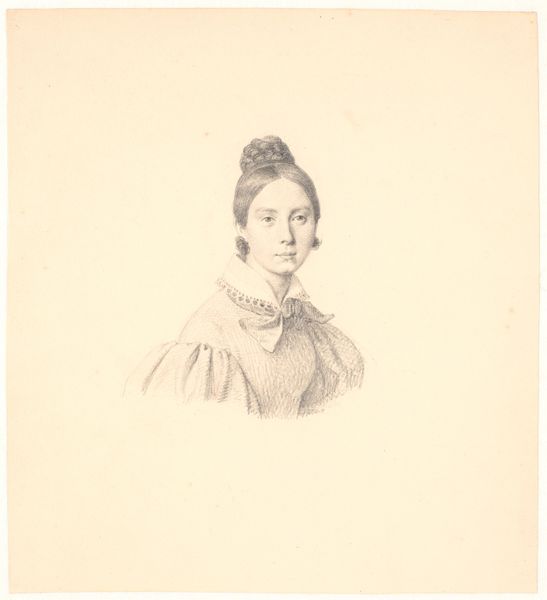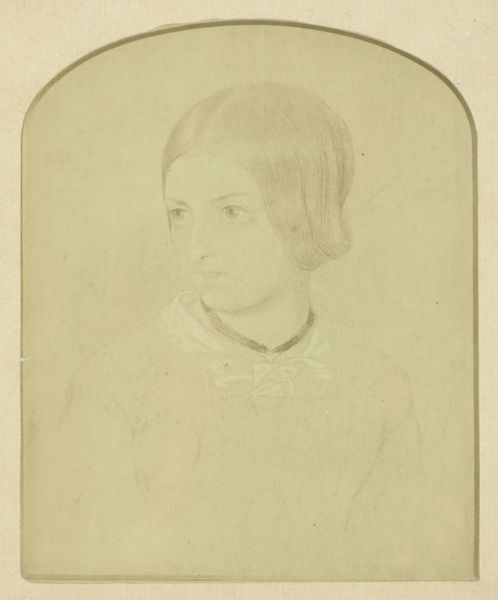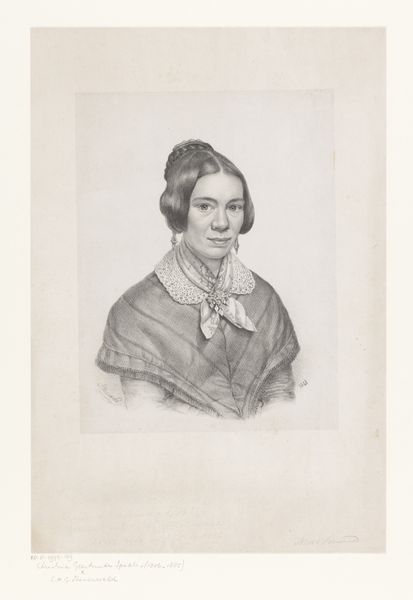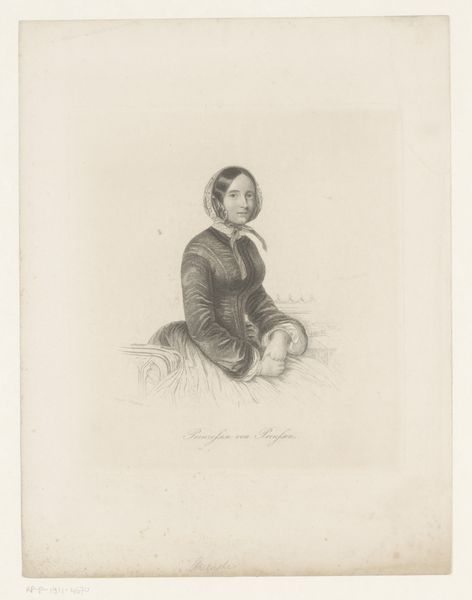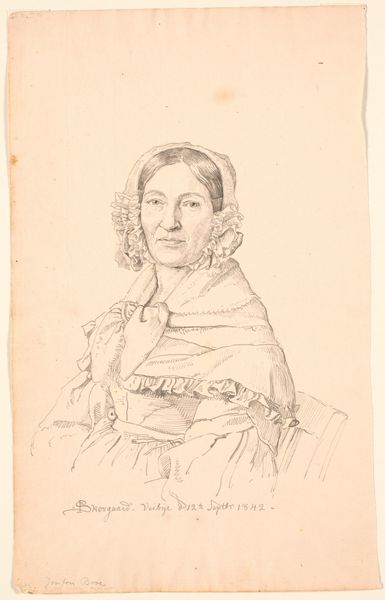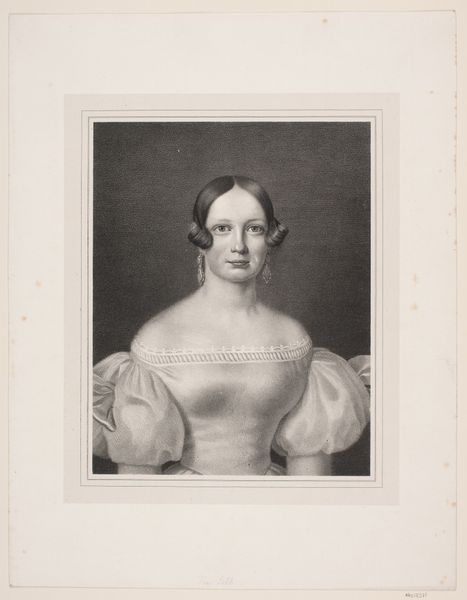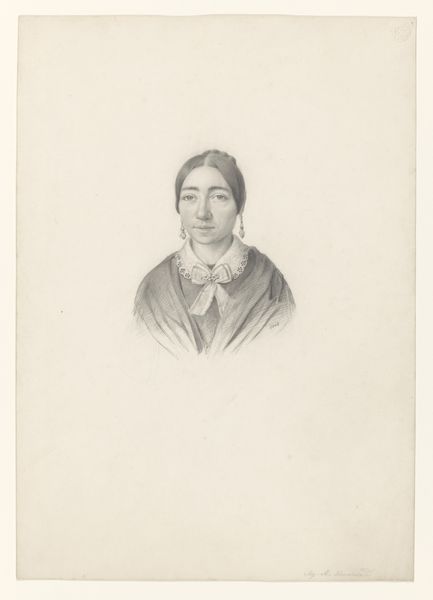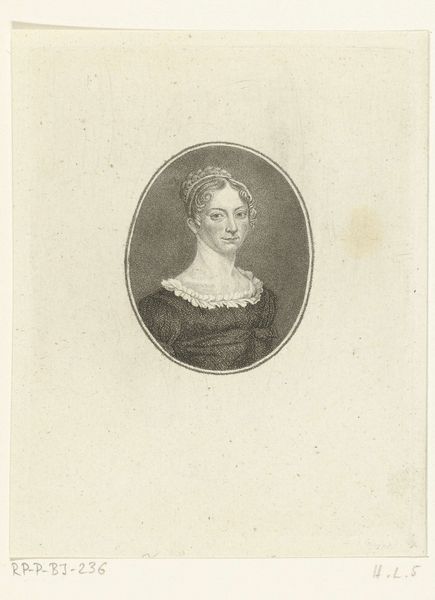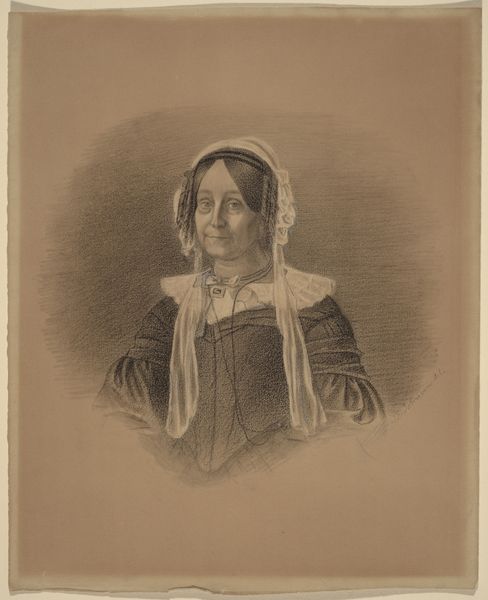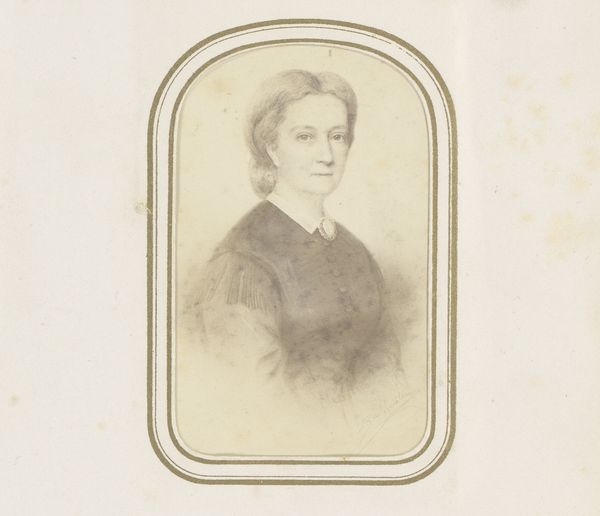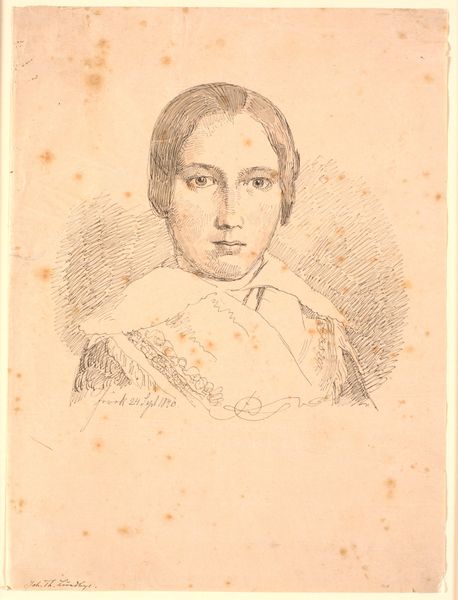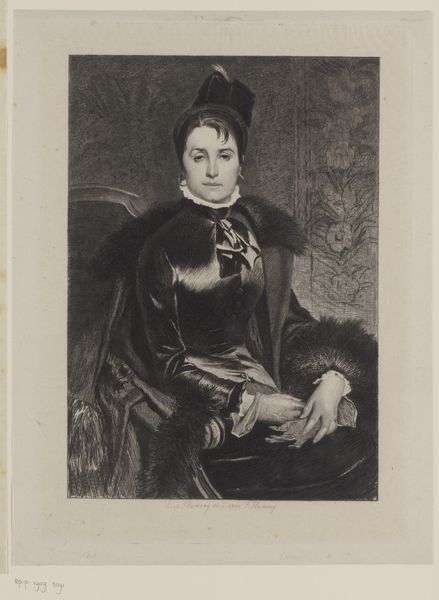
Portret van mevrouw de Perez, residensvrouw van Sourabaya Possibly 1850 - 1856
0:00
0:00
Dimensions: height 339 mm, width 251 mm
Copyright: Rijks Museum: Open Domain
Curator: Well, let's consider this pencil drawing by Christian Heinrich Gottlieb Steuerwald, titled "Portret van mevrouw de Perez, residensvrouw van Sourabaya"—likely dating from the 1850s. What's your initial take on it? Editor: It’s so delicate, isn’t it? There's a quiet dignity to it, a certain restrained sadness in her eyes. It reminds me of a faded photograph found tucked away in a forgotten locket. Curator: That's an interesting perspective. The fragility is certainly conveyed through the medium itself—pencil on paper. The choice to depict Mevrouw de Perez in this medium speaks volumes, doesn’t it? We often find pencil portraits used for preliminary sketches, yet here it stands as a finished work. Editor: Exactly! It almost feels like an intimate glimpse, like catching someone in a moment of private reflection before they're ready for the grand oil portrait. Her clothing seems so proper with a touch of rebellion, almost as if there are secrets being kept safe behind buttoned fabric. Curator: The fact that she's identified as the "residensvrouw" is essential. It indicates her social position in colonial Surabaya. The dress and posture are coded with symbols of status, while the softer medium offers an almost contradictory level of humanity. This isn't a monarch or warrior; this is a woman carrying the weight of empire alongside domestic responsibility. Editor: Absolutely. The very texture of the pencil work gives it a dreamlike quality. Do you think that connects somehow to this cultural moment for women's experience in a colonizing world, carrying a different perception of beauty and emotion compared to men's experience during those times? Curator: I believe that’s a compelling argument. Consider how the Dutch Golden Age, which had ended centuries prior, idealized and coded female images to project a sense of moral authority for the home nation, that now the very softness, lightness, and inherent "sketchiness" challenge that kind of projection. Editor: You know, for me, beyond any specific symbolism, this portrait resonates because it whispers stories of resilience. Every sketched line tells a complex story with many implications across generations, making the image not just something to see but also feel deeply within your own experience. Curator: I agree. Steuerwald's artistry invites us to contemplate not only the status of Mevrouw de Perez, but also to consider the wider framework within the image, offering the sense that perhaps such coded signifiers could potentially break from colonial oppression and find solace through cultural connection.
Comments
No comments
Be the first to comment and join the conversation on the ultimate creative platform.
